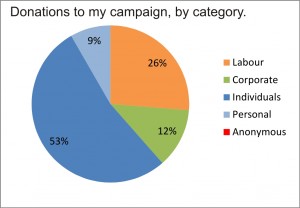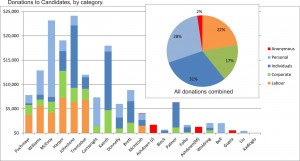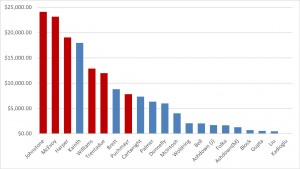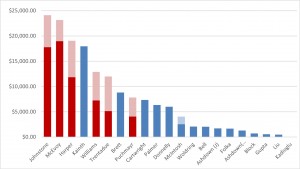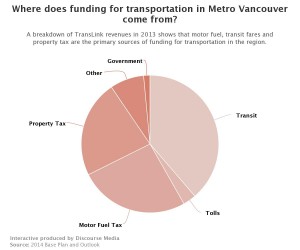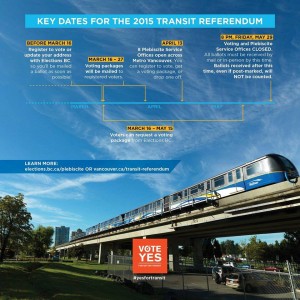You may have noticed I didn’t update on last week’s council meeting, nor on the week before. That is because we did not have a council meeting last week, and the previous week’s meeting was limited to a short “Closed” session to deal with some necessary business, and a Committee of the Whole meeting that was more of a workshop.
You can watch that workshop on the live feed, if you are interested in the two topics we dug deeper into. I will cover them a bit here, and share a bit of where my (early, and therefore very open to adjustment as information arrives) thoughts are on these programs.
Family Friendly Housing Policy
I seem to be at the certain age where a great many people around me are surrounded by children, increasingly their own. And the numbers keep growing (Congratulations Mike & Melissa! Rick & Lana!). Recently, there has been quite a bit of conversation having to do with housing affordability – not only of the low-income or supportive housing, but of affordable housing for middle-income families.
Many of my generation (and the next) who have chosen the urban lifestyle of a place like New Westminster as opposed to increasingly soul-crushing suburbia and commutes, are not necessarily expecting a big house with a big yard, but are ok with townhouses and condos. However, most lament the lack of 3+ bedroom places available for their growing families. Very few feel they can afford a detached single family home (even if they want one and the attached costs, maintenance issues, and hassles). Outside of the detached house model, 3+ bedroom options that do become available in the new building stock end up being tower penthouses or the token pedestal townhouses attached to a tower, both of which are unaffordable to buy (challenging the single family detached in price), and come with disproportionate Strata fee loads.
Some go so far as to suggest that this one issue is going to limit the City of New Westminster’s ability to attract and keep a stable population of young professionals with families – the very population we need to provide us a solid tax base, a vibrant school population, and that community feel we love so much.
Problem is, for a long time, no-one really knew what to do about it. Vancouver has already taken steps to encourage the development of family-friendly housing (although notably two-bedroom is only as far as they would go), and some other Cities (North Van, Burnaby) are looking at policies. New West has been working on this for a while, and has already reached more than 800 citizens through the initial outreach/consultation process, and collected a considerable amount of data on the national, regional, and local markets. The City even contracted a financial feasibility study of building more family-friendly units. It seems the City has taken a pretty comprehensive approach (something I can take no credit for, as this was all done prior to my joining Council).
The issue is (in my opinion) more complicated than just forcing new towers to have a higher percentage of 2-3 bedroom units, and I am thinking that may be the completely wrong approach. The cost of concrete high-rise construction would put those units on price competition with single family detached homes in New West, even if they were not the “penthouse” buildings. If we look at the neighbourhoods in New Westminster that have higher density family-sized units, we look at the low-rise areas of the Quayside, the Fraserview area, and Queensborough.
I suspect the solutions to family friendly housing are found in low-rise infill density, and will rely on more than just restrictions on bedroom counts, but on providing more prescriptive design guidelines to assure ground-based homes have adequate space for a family, including storage space adequate for a growing family (where to store the bikes, the hockey gear, the Lego!), adequate kitchen/pantry space (I have a former co-worker who always lamented the massive volume of “boy-chow” he had to supply his active growing kids), and that there are enough safe opens spaces and other community amenities so that growing kids have room to run.
There is quite a bit of data in the report (worth reading if you are interested) and this will be an ongoing conversation, I would love to hear your ideas about what the challenges are.
Canada Games Pool / Centennial Community Centre
There have been rumblings for several years about the Canada Games Pool. State-of-the-art in 1973 when the Canada Summer Games were hosted in New Westminster and showing its age, the pool is increasingly expensive to operate and some significant capital costs are upcoming as major components of the physical plant are reaching the end of their service life. If we keep the pool as it is, we will need to spend several million dollars in the next few years keeping it working. If we replace it or do a major refurbish, then those millions can be rolled into the larger project instead of being invested in a fading asset.
The time to decide what to do is now, as whatever decision is made, there is going to need to be construction happening in this council term. So the public consultation is beginning, and staff came to council to start putting a framework around that consultation, and assure their consultation vision aligns with ours.
Disclosure: I am not a swimmer. I like to swim in warm oceans and lakes, not pools. I see swimming as something one does to cool down in tropical heat, to observe colourful sea life through a mask from a respectful distance, or to prevent oneself from drowning, but I don’t do it for exercise. I don’t even use gyms. I like to exercise outdoors, and see no point in picking weights up and putting them back down again when I could instead be out on my bike or climbing a mountain. So I personally have no skin in the Canada Games Pool game.
I do, however, hear from a lot of people about the pool. The ever-suffering MsNWimby uses the CGP several times a week, as she does like picking weights up and putting them down and such activity. My car pool partner grew up swimming laps with the Hyack Swim Club, and now lives a block away and trundles her kids off to Poirier where the water is warmer. I have heard many people talk about how great Edmonds pool is for their kids (despite the terrible change rooms and sometimes terrifying dumping bucket), but how CGP is still the place to go if you want to do serious laps.
I also know the current pool is not only the largest source of corporate Greenhouse Gasses of any City operation, it is also expensive to operate. For every person who walks into CGP, the taxpayer subsidizes that entry to the tune of more than $1 each. To me, there is no problem with that, we subsidize library users, people at Century House, the Youth Centre, the Anvil, and for that matter everyone who drives and park on our streets or walks on our sidewalks – society is a socialist enterprise. However, I want to know if people feel they are getting good value from the CGOP, and how we can make that value better.
To get there, I want to hear from people in New West about what they want from a Canada Games Pool. This is not the official public engagement, but I want to hear peoples’ opinions on a few questions:
What kind of pool do you want? Do we want a “competition pool” (50+ m, cooler water, proper dive tank with high platforms), a family swimming centre (25m, warmer, more play-time amenities), or both (recognizing the increased cost that comes with having it all).
Besides the pool, what other uses? As the Centennial Community Centre is also reaching the end of its life, the question of how we manage the combined amenities is also a good one. As this is the only community centre in the Glenbrook North / Massey Heights/ Upper Sapperton area – what kind of services should we include? Remember, again, that every new service costs money to build, money to program, and money to operate, and there is no chance that an accessible community centre will ever operate at 100% cost-recovery. What are the priorities for the facility?
Where would you put the pool? Right now, the only discussion is where on the current footprint of the block between McBride, Cumberland, on East 6th Ave. I have been wondering –f we were to build a new pool starting from fresh, would we put it there? Or would we put it nearer more population density, where the future population growth is expected instead of in what is essentially a single-family-detached neighbourhood. Should it be closer to a SkyTrain station? I have to admit, I don’t have a location in mind, and it could be hard to find another 100m x 50m footprint in the City to build a centre like we have (or 100m x 80m to build something like Edmonds), but I think it is important for us to have this discussion before we build an asset that will set in stone for 50+ years. This opens up the floodgates towards innovative approaches:
What other delivery approach could we use? I could see a model where the pool was moved and replaced with a smaller community centre (think a new Centennial type facility, a gym or two with meeting rooms, maybe a pocket library), and excess land on that lot sold off to finance part of the cost of the replacement pool and centre. I could also imagine locating the pool in a denser neighbourhood and selling off density, or even co-developing a larger lot with a residential component to share some costs.
I have to emphasize: I am spitballing here. It is very likely that the pool will be built adjacent to the existing site, and the institutional and neighbourhood momentum that exists overpowers any other option (or, more likely, any other option is deemed too risky or too cumbersome in the relatively tight timeline of the project). But I am open to hearing creative ideas.
So there you go, a couple of weeks without regular Council activity, but lots for council to chew on, even outside of the ongoing “Vote for a livable Transportation future” campaign work. Oh, and I took a 2 hour walking tour with people who want to “Save our Parkade”, attended a celebration of the 58th anniversary of Ghanaian Independence, attended a couple of Residents’ Association meetings, chaired meetings with the Environmental Advisory Committee and the Advisory Committee for Transit, Bicycles, and Transit, had a meeting with the Downtown BIA around their exciting new strategic plan, and attended the 100th Anniversary Concert for the New Westminster Symphony. Back to regular council life next week.
